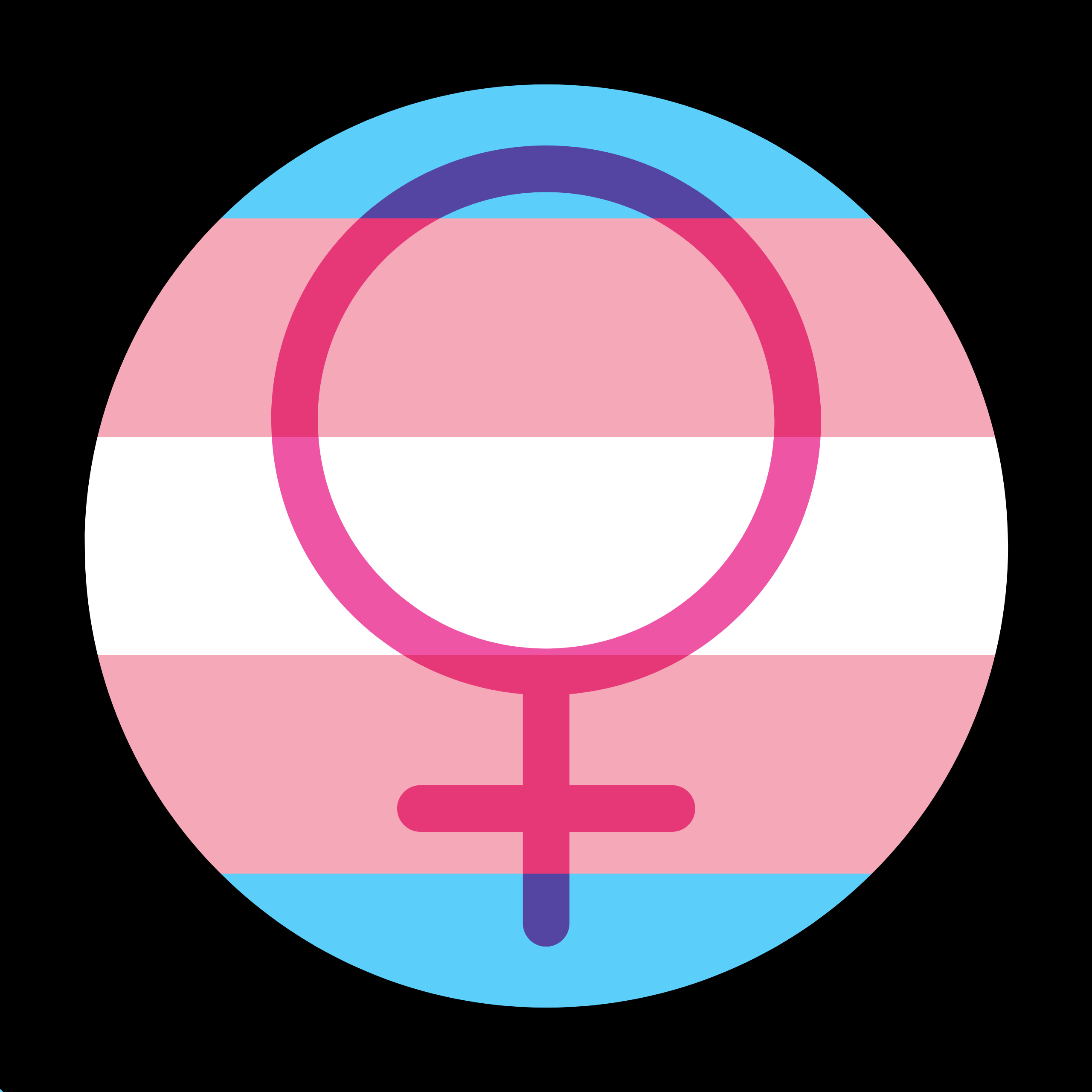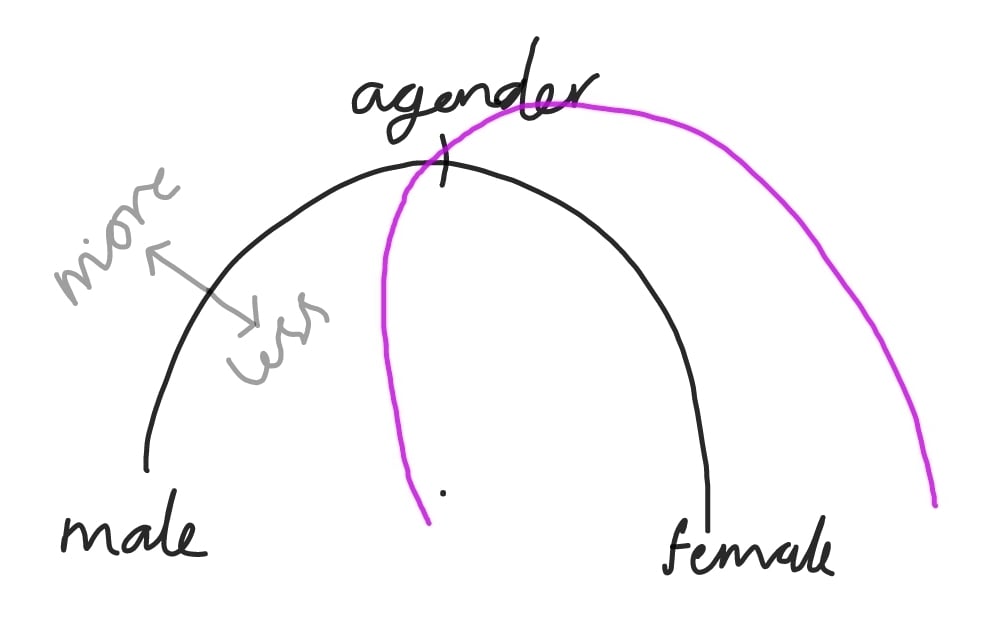A personal take on how I experience gender.
EDIT - more context would have helped as
I’m not trying to propose some simplified mathematical fits all graph here.
I’m struggling, having been out as non binary for about 5 years, with the idea that trans woman might be a better introductory starting point label for me. I understand gender as complex - far more complex than a 2 line graph sketch - but drew the graph to hone in on MY experience with fluidity. I was interested in my strength/clarity of feeling at different points.
Gender is expressed as an N dimensional vector in the tangent space at a point on a larger N dimensional pseudo-Riemannian gender manifold.
Travelling on a path through this manifold can act to rotate your gender identity once you arrive at a new point so be careful where you step, some paths are known to crack eggs.
Mapping the manifold onto a 2D socially constructed gender Cartesian plane introduces singular points and so is considered a dangerous and largely useless construction.
I’m just being silly, but the translation here is something like:
We all understand gender in our own unique way, based on a shared understanding of some broader concept
Changing our understanding and relationship to gender as a concept is possible, and may lead to you realising your own gender was something other than what you’d previously assumed.
The gender binary is ass.
Haha, yes quite.
https://pubmed.ncbi.nlm.nih.gov/26621705/
https://people.socsci.tau.ac.il/mu/daphnajoel/files/2019/10/Joel2019Neuroscientist.pdf
I think probably gender identity is more complex than a 2D plot, too. Even this complex brain-sex mosaic model doesn’t adequately capture it.
A common model I’ve seen for talking about gender is using the Gender Unicorn:

It is of course inaccurate and problematic, as any theory is going to be for something as complex as gender.
What is useful about the Gender Unicorn is that it gives you that intensity scale that on one extreme could be understood as agender, which is what I think your drawing is trying to represent.
Yes of course it is. But thanks for the links, will read.
I’m not presenting anything absolute or probably new. Just a personal take on a correlation between where my gender is and how strongly I feel it, at the different points of my fluidity.
analyses [of MRIs of more than 1,400 human brains from four datasets] of internal consistency reveal that brains with features that are consistently at one end of the “maleness-femaleness” continuum are rare.
Love this statement.💜
Extracts from 2nd link that stood out to me
most evidence to date reveals a much larger contribution of sex-related hormones compared to sex-related genes to the sexual differentiation of the rodent brain and behavior
…
studies revealed that feminization and masculinization are independent processes rather than two poles of a continuum
…
And adding to the first link:
[brains whose features align clearly at either male or female end are] low (0% to 8%) and much lower than the number of mosaic brains (23% to 53%), that is, brains in which at least one feature was at the “femaleend” zone and one feature was at the “male-end” zone…
yes, I think it’s quite surprising to find most people have a mix of sexed traits, the whole concept of a strict binary doesn’t apply at all to the brain it seems
Considering we all start the same for the first few weeks and then differ after that, it makes sense it’s not 1 spectrum of differences. It should be 2 at least.
and no worries, I suck at my delivery - I don’t mean to come across with such refutation vibes 😅 Maybe I’m just excited to share these articles and connect the dots between the current science on “brain-sex” and the ways we conceptualize or think about gender identity. I like your drawing, esp. the way it is plotted in angles rather than on a Cartesian plot - it’s just fun and quirky.
This looks crazy similar to the gender bread person

Yes, very similar! They are used for the same purpose. It’s a fine educational resource for a cis and/or heterosexual audience that have never thought about sexuality or gender before and this is like the superficial introduction to concepts like gender being more than just your sex, or being completely binary, etc.
Looks like polar coordinates, with theta being the maleness (at 180 degrees) or femaleness (at 0 degrees), and radius being the magnitude.
(edit: That’s actually what it says above the chart, I just missed it.)
Yup! I considered drawing a locus but decided that a line said enough.
It’s been a useful realisation for me that while my gender fluctuates, I feel it less when I’m feeling towards the male side.
Oh my god I’ve unironically described myself with polar coordinates too!






